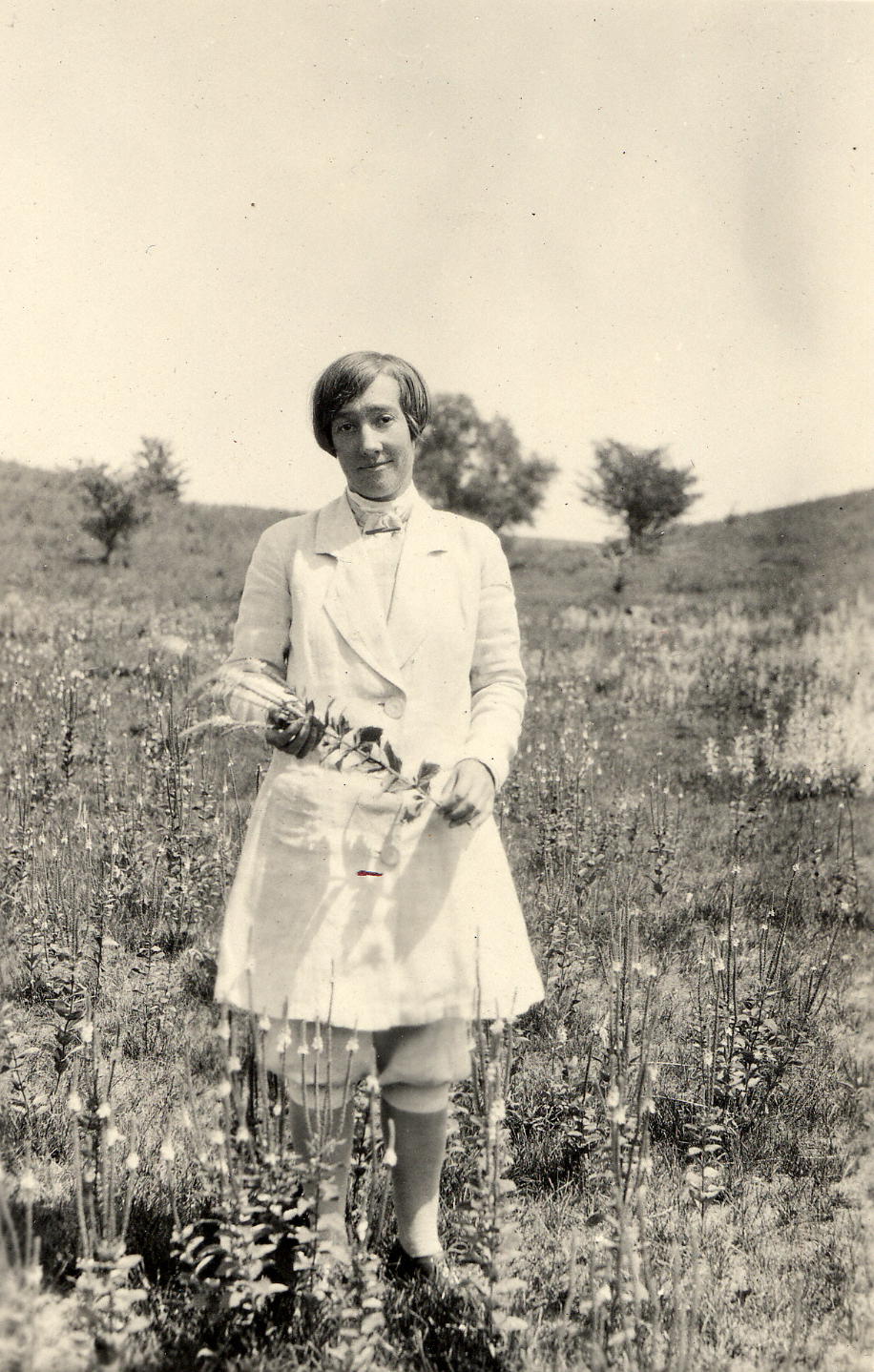Prairie Visionary
By Daria Mather on May 7, 2020 in Blog
Ada Hayden was many things. A scientist, a scholar and a fierce advocate committed to protecting Iowa’s native prairies. For these reasons, she is known as the “champion of Iowa prairies.”
Iowa’s native prairies. For these reasons, she is known as the “champion of Iowa prairies.”
As we celebrate the centennial of Iowa’s State Parks, and with them, Iowa’s state preserves, forests and wildlife management areas, we pause to recall some of the visionary Iowans that made them possible. Iowans like Ada Hayden, for whom Iowa’s first state preserve, Hayden Prairie State Preserve, is named.
Hayden was born in 1884 near Ames, Iowa. Her interest in native plants grew out of her experience exploring the native flora on her family’s rural 80-acre farm. She met Dr. Louis Pammel, a professor at Iowa State College (now Iowa State University) and the architect of the Iowa park system as a young adult. Pammel took an active interest in Hayden and encouraged her to study botany at the college. She did just that and received her bachelor’s degree from Iowa State College in 1908.
A voracious scholar, Hayden went on to become the first graduate assistant at the Shaw School of Botany in Missouri. She received a master’s degree in botany from Washington University in St. Louis in 1910, and returned to Ames in 1911 to pursue her Ph.D. In 1918, Hayden became the first woman and the fourth student, male or female, at Iowa State College to receive a doctorate degree. She became an Assistant Professor of Botany at Iowa State College in 1920, where she taught and conducted research until her death in 1950.
(1).png)
In 1934, Hayden was named curator of Iowa State’s herbarium. While curator, Hayden added between 30,000 and 40,000 plant specimens to the herbarium’s collection. She would also collect duplicates to be able to trade with other institutions. In 1987, the herbarium was renamed the Ada Hayden Herbarium at Iowa State University in her honor. Containing more than 600,000 specimens, it is now the largest herbarium in Iowa.
During her time at Iowa State College, Hayden published 29 academic papers, including one early in her career about the importance of protecting native prairie. The report is regarded as the first published paper to recognize the importance of protecting native prairie in Iowa. After many years of writing about prairies, Hayden became a committed conservationist and vocal public advocate for their protection.
A member of the Iowa Academy of Science conservation committee, she surveyed prairie remnant around the state and made preservation recommendations. This work led her to campaign for establishing state prairie preserves.
Hayden Prairie State Preserve in northeastern Iowa is an outstanding example of native tallgrass prairie. At 240 acres, it is the largest prairie remnant in Iowa outside the Loess Hills. The prairie was acquired by the state in 1945 after Hayden compelled the Fish and Game Division of the State Conservation Commission to protect it. Hayden Prairie Preserve is one of 29 remnant prairies Hayden is credited with permanently protecting. Hayden worked hard to better understand and protect these prairies, which are now part of the less than .1 percent (an estimated 36,000 acres) of native prairies that remain in Iowa.
As Iowa Natural Heritage Foundation looks to the next 100 years of protection of Iowa’s special places, we draw inspiration from Hayden; a woman with conviction, grit and deep love for Iowa’s outdoors. She really was — and continues to be — a “champion of Iowa prairies.”
Photo of Ada Hayden provided courtesy of the Iowa State University Library Special Collections and University Archives